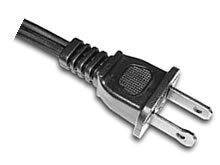Hello, I am a high school teacher. I am primary a band guy but I am also the theater guy.
My question is about using a female Edison to male stage pin. I know there are other threads on this topic but I have found them difficult to understand.
I recently bought 2 cables like this so I can use some regular lamps in an upcoming production. We have a EDI Bijou light board. Do I need to do anything special on my light board to make sure the light/lamp does not explode (or whatever may happen)? Any help would be appreciated.
Thank you!
Steve
Edit
Yes they will be 60w A19 type bulbs.
Thank you guys so much! This was a big help as now I will not have to try and figure how to learn new features on my light board.
s
My question is about using a female Edison to male stage pin. I know there are other threads on this topic but I have found them difficult to understand.
I recently bought 2 cables like this so I can use some regular lamps in an upcoming production. We have a EDI Bijou light board. Do I need to do anything special on my light board to make sure the light/lamp does not explode (or whatever may happen)? Any help would be appreciated.
Thank you!
Steve
Edit
Yes they will be 60w A19 type bulbs.
Thank you guys so much! This was a big help as now I will not have to try and figure how to learn new features on my light board.
s
Last edited:




